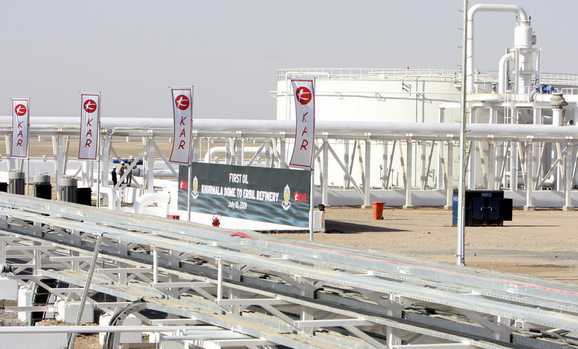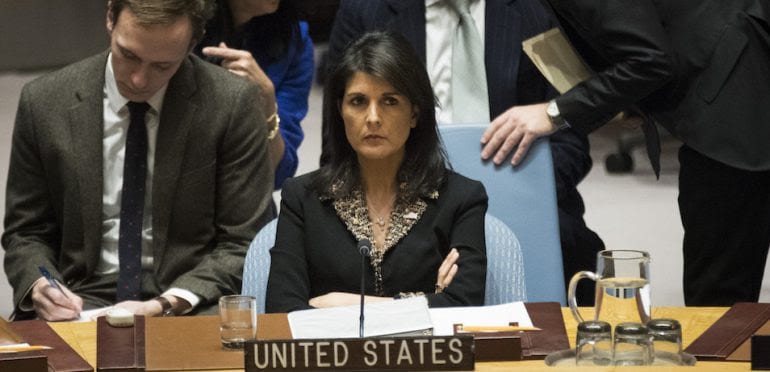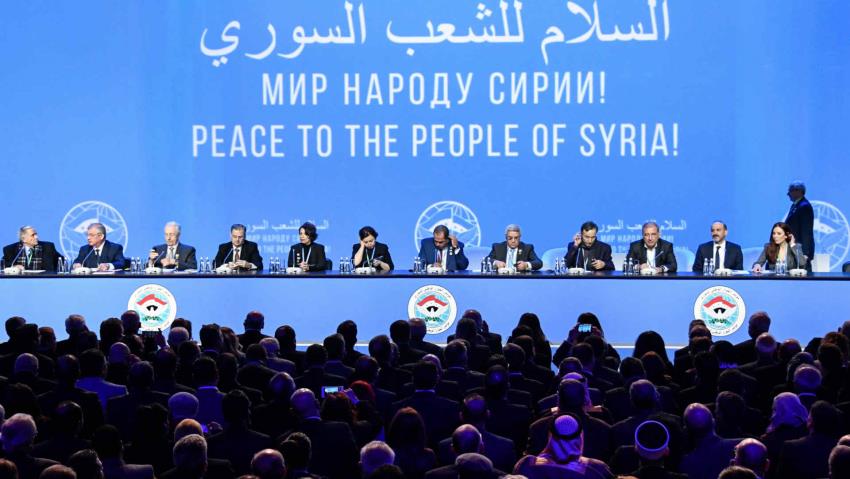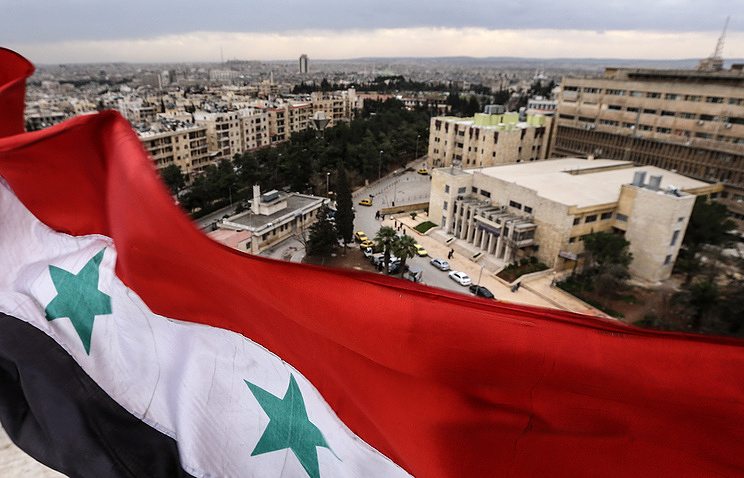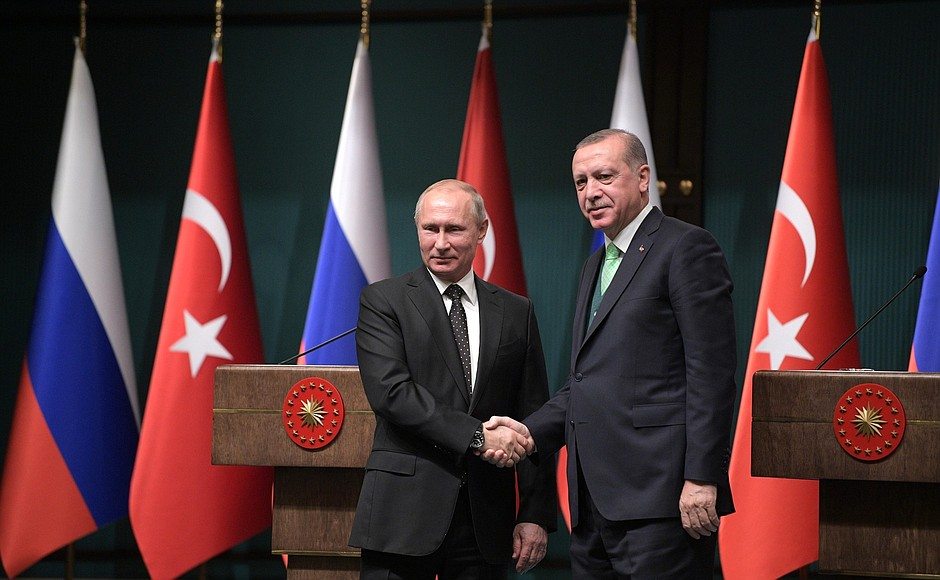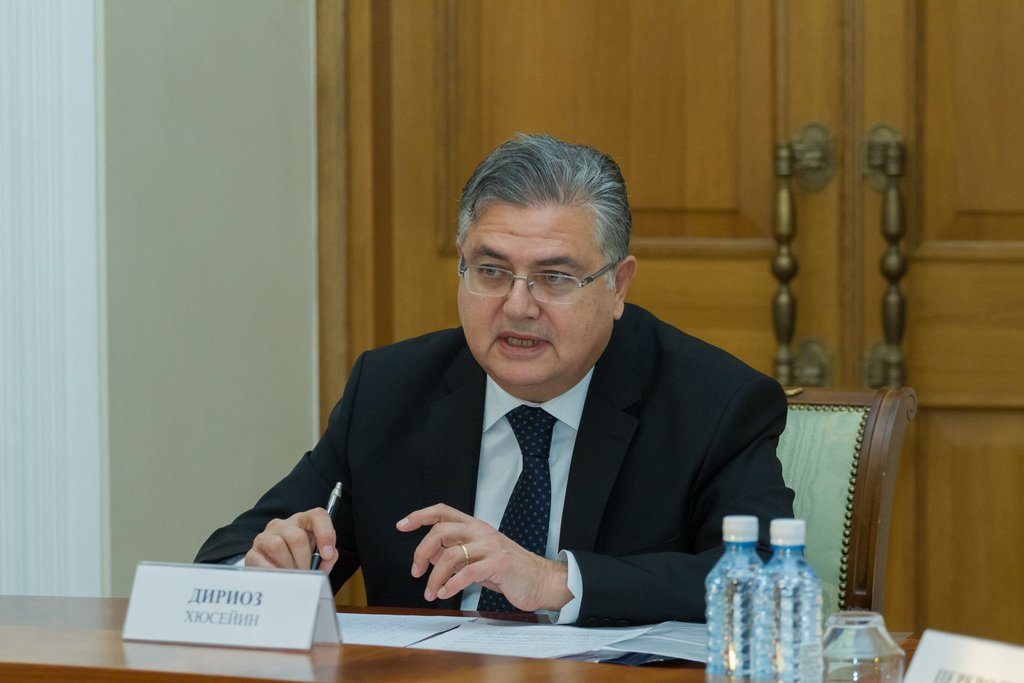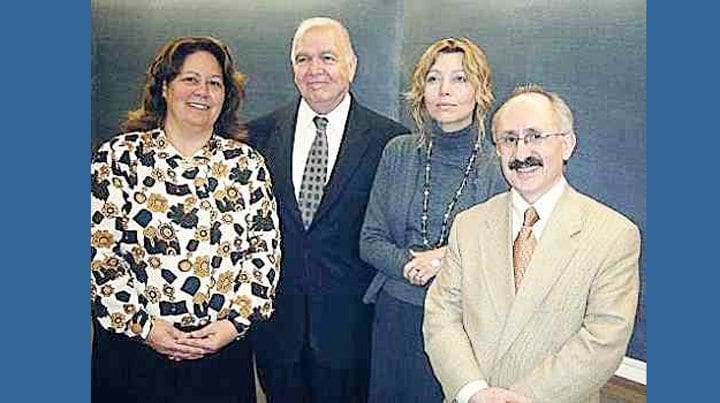If you’re in the mood, would you consider taking a walk with me and, while we’re at it, thinking a little about America’s wars? Nothing particularly ambitious, mind you, just — if you’re up for it — a stroll to the corner.
Now, admittedly, there’s a small catch here. Where exactly is that corner? I think the first time I heard about it might have been back in January 2004 and it was located somewhere in Iraq. That was, if you remember, just nine months after American troops triumphantly entered a burning Baghdad and the month after Iraq’s autocratic ruler, Saddam Hussein, was captured near his hometown, Tikrit. Yet despite President George W. Bush’s unforgettable May 1, 2003, “mission accomplished” moment when, from the deck of an aircraft carrier off the coast of San Diego, he declared “major combat operations in Iraq… ended,” the American war there somehow never actually stopped. An insurgency had already flared, U.S. bases were being periodically mortared, and American officials feared that some kind of civil war was in the offing between the country’s formerly reigning Sunni minority and its rising Shiite majority.
It was then that Major General Charles Swannack Jr., commander of the 82nd Airborne Division, mentioned that corner (and as you’ll gather from his comments, it wasn’t even the first time he’d brought the subject up). Here, as New York Times correspondent John Burns reported it, was Swannack’s assessment of the situation:
“The general, a large, imposing figure renowned among his troops for his no-nonsense ways, began his remarks by reminding the reporters that he had appeared in Baghdad six weeks ago, about the time of the insurgents’ Ramadan offensive, and had said he believed [troops] in his area were ‘turning the corner.’
“Now, he said, ‘I’m here to tell you that we’ve turned that corner. I can also tell you that we are on a glide path towards success, as attacks on our forces have declined by almost 60 percent over the past month.’”
As it happened, Americans would remain on the glide path to that corner of ultimate success for some time, not just in Iraq but in Washington, too. There, as Rowan Scarborough reported more than a year later, in March 2005, “in the privacy of their E-ring offices, senior Pentagon officials have begun to entertain thoughts that were unimaginable a year ago: Iraq is turning the corner. ‘This is still a tough fight. We don’t want anyone to think that it is not,’ said retired Air Force Lt. Gen. Thomas McInerney, a military analyst who strongly supports Defense Secretary Donald H. Rumsfeld. ‘But the momentum is in our direction.’”
Corner-less Iraq
Here was the problem: every time American troops actually turned that corner, what they found there were insurgents armed with rocket-propelled grenades (RPGs) and other weaponry, sometimes even American-produced arms. In addition, the streets around that corner turned out to be pitted with half-buried improvised explosive devices, or IEDs, those same insurgents could build from instructions on the Internet and that could destroy the most well-armored Humvee for the price of a pizza. (Early on, in fact, some of the places down which American troops had to turn were already being given grimly sardonic names like “RPG Alley.”) There were, as it happened, so many corners to turn and yet, from 2003 on, seemingly nowhere to go.
I don’t doubt that those of you of a certain age preparing for our little walk are already thinking about a somewhat more perilous image from another war: the infamous “light at the end of the tunnel” that will forever be connected with Vietnam. That phrase was repeatedly used by Americans to describe the glide path to victory in that conflict and would long be associated with the commander of U.S. forces, General William Westmoreland. He used it to remarkable effect in 1967, a mere 10 weeks before the enemy launched its devastating Tet Offensive.
However, the general was anything but alone in his choice of imagery. That “tunnel” was also occupied by a range of top U.S. officials, from President Lyndon Johnson to National Security Advisor Walt Rostow. And it wasn’t the newest of images either. After all, General Henri Navarre had used it a decade and a half earlier in the French version of that losing war.
For those in the antiwar movement of the era, it was an image that always had a particularly ominous resonance, since you weren’t just heading for “the corner” but deep inside a dark tunnel where, just beyond the light glimmering at its end, it was easy enough to imagine a train bearing down on you. By the way, lest you think there’s anything especially original about the American military in the twenty-first century, Westmoreland also spoke with hope in 1967 (but assumedly before he found himself in that tunnel) of how the U.S. “had turned the corner in the war” and how its end had begun “to come into view.”
In Iraq, the light at the end of the corner would prove no more evident than it had been in that Vietnamese tunnel and, as a result, the corner itself simply disappeared. In fact, in testimony before the Senate Armed Services Committee in April 2008, U.S. commander (and Iraq surge general) David Petraeus even admitted, however reluctantly, that “we haven’t turned any corners, we haven’t seen any lights at the end of the tunnel.” And soon after that, corners of any sort were largely abandoned (at least as figures of speech). Or perhaps, thought of another way, the problem of finding a corner, no less any good news on the other side of it, would be solved by a change in tactics in the second iteration of Washington’s Iraq War in this century: the one against the Islamic State. From August 2014 on, the U.S. Air Force would be called in to play a major role in turning Iraq’s embattled cities, from Fallujah to Mosul, into so much rubble. No corners, no problems, you might say.
Now, I don’t want you to be disappointed. I was serious about that walk to the corner, just not in Iraq. Consider corner-less Iraq no more than background information for the real walk we’re going to take.
But before we leave Iraq, let me mention — and I hope you won’t consider me too much of an optimist for this — that I just might see a little light glimmering at the end of the rubble. Is it possible that, some 14 years late, America’s mission-accomplished moment is finally arriving? After all, the “caliphate” of Abu Bakr al-Baghdadi is history and, in December, President Donald Trump even declared victory over ISIS. (“We’ve won in Iraq,” he said without hesitation or qualification.) No tunnel, no corner, no glimmers of light, just the whole shebang.
Now admittedly, while the so-called caliphate is gone and its militants driven out of the Iraqi and Syrian cities they had occupied, some of its fighters seem to be turning themselves back into guerrilla warriors and suicide bombers — the first post-caliphate bombings in Baghdad have evidently begun — and aren’t quite acting like they’re down for the count. Not yet anyway (and let’s not forget as well that, in the years leading to Washington’s “victory,” the Islamic State did somehow manage to turn itself into a global terror brand).
Still, give me a little leeway here. I’m just talking about glimmers, and… oh, wait, I should mention one more thing: in neighboring Syria, all a-glimmer itself these days, the U.S. is now seemingly on the brink of involvement in a whole new war between NATO ally Turkey and the Kurdish forces it’s still backing against ISIS and, talking about what’s glimmering in the distance, a possible future war with Iran also seems to be lurking just around the next turn of the Trumpian corner.
Still, let’s keep the good news in full view. U.S. troops are actually being drawn down in Iraq and a mere 14 years after that mission-accomplished moment, some of them are evidently being sent to the place where that corner-to-be-turned still evidently stands, where for America’s war-fighting generals and other key officials, there have always been corners to turn beyond compare.
“Enhancing Security and Stability in Afghanistan”
So how about taking that little walk of ours somewhere in Afghanistan? After all, a mere 16 years after the Bush administration invaded and liberated that land — at the end of November 2017, to be exact — U.S. commander Army General John Nicholson, who had only recently been claiming that the fight against the Taliban (and a new branch of ISIS) was “still in a stalemate,” suddenly suggested… yes, you guessed it… that the by-now famous corner, so long sought after, was once again being turned. He managed to make the point by quoting a recent statement of Afghan President Ashraf Ghani, saying, “Now, looking ahead to 2018, as President Ghani said, he believes we have turned the corner and I agree. The momentum is now with the Afghan Security Forces and the Taliban cannot win in the face of the pressures that I outlined. Again, their choices are to reconcile, live in irrelevance, or die.”
If, so many years later, General Nicholson were alone in such a conclusion, you might question his claim, given that the Taliban now control or contest more Afghan territory than at any time since they were driven from power in 2001; that President Ghani’s government seems shakier than any since the U.S. “liberated” the country; that the Afghan security forces have been taking a beating; and that the capital, Kabul, the heartland of government control, has been a veritable inferno of terror attacks. Still, here’s what gives Nicholson’s statement its power: he’s not alone. His conclusion has been backed by a remarkable array of knowledgeable officials since at least 2010.
Here’s just a partial list: U.S. Afghan commander General Stanley McChrystal in February 2010 (the U.S. had “turned the corner” in Helmand Province in the embattled poppy-producing southern heartland of the country); Secretary of Defense Robert Gates on June 7, 2011 (“I leave Afghanistan today with the belief that if we keep this momentum up, we will deliver a decisive blow to the enemy and turn the corner in this conflict”) and his boss President Barack Obama on the same day (“We’ve broken the Taliban’s momentum, trained Afghan security forces, and are now preparing to turn a corner in our efforts”); Chairman of the Joint Chiefs General Martin Dempsey in April 2012 (“In my opening months as chairman, I worked with the secretary of defense and the president to fashion a new defense strategy, guidance that would address the security paradox. This guidance is meant to help our military… turn the corner from a decade of focus on stability operations and find a new way forward to address that wider spectrum of threats”); and Gates’s successor, Defense Secretary Leon Panetta, in September 2012 (“We have turned the corner”); and so it’s gone in Afghanistan.
Or put another way, never have so many prospective corners been turned over so many years to so little effect. Nonetheless, if you’re game, let’s think about heading out in search of just such a corner one more time. Before we go, though, let me mention one other thing. Given the experiences of the British and the Soviets, among others, Afghanistan has long been called “the graveyard of empires.” However, for Afghans since 1979, when the first iteration of America’s wars there began, it has simply been a graveyard. This year, things have already gotten so bad in Kabul — from attacks on a major hotel and a military academy to a devastating bomb concealed inside an ambulance — that city dwellers have reportedly taken to carrying “in case I die” notes with them, lest their bodies be shredded and left unidentifiable by the latest Taliban or ISIS terror assault.
Across the country, in winter — usually a time of little fighting — the war(s) are simply being ratcheted up. The Trump administration and the Pentagon are sending in more troops (“advisers”), more planes, and more drones. The U.S. military has announced soaring numbers of air strikes, as well as more bombings (including record ones) than at any time since 2012 when 100,000, not 14,00-15,000, U.S. troops were in-country. And the U.S. air commander there, Air Force Major General James Hecker, recently threatened more of them, claiming that “the Taliban still has not felt the full brunt of American and Afghan air power.” And yet, according to both the Pentagon and a recent BBC study, the Taliban is now contesting more territory than at any time since 2002 and militants from the ISIS branch there have similarly been spreading to new parts of the country.
Yes, the U.S. military (in support of Afghan security forces) and the Taliban (as well as ISIS) are fighting each other, but functionally, when it comes to ordinary Afghans, they are colluding in killing striking numbers of civilians across the country. In other words, more than a decade and a half later, despite those corners, it all only seems to be getting worse with no end in sight.
After all, in these years, the two groups the Bush administration went after in 2001, al-Qaeda and the Taliban, have somehow morphed into “more than 20 terrorist and insurgent groups” on either side of the Afghani-Pakistani border. (And in case you doubt those figures, they’re straight out of a recent ill-titled Pentagon report, “Enhancing Security and Stability in Afghanistan.”) Beyond Afghanistan, in these years, the same process has been repeating itself, as the original al-Qaeda morphed into a whole range of groups (al-Qaeda in the Arabian Peninsula, al-Qaeda in the Islamic Maghreb, and so on) and the same thing is now happening to ISIS.
In fact, I’m starting to wonder about almost any corner in much of the Greater Middle East and Africa, which means it’s true: I’m the one who’s hesitating now. I know what I promised you, but to be honest, I’m having my doubts about this walk of ours. I’m worried about what exactly will happen if we ever do get to that corner. Who, after all, wants to whistle past a graveyard?
So here’s my suggestion. Why don’t we just postpone our walk for a while? Bad as things are right now, experience tells us — or at least our military commanders swear to it — that they’ll get better sooner or later. What if we check back this fall, or maybe early next year, or perhaps sometime in 2020, or even 2021? By that time, there has to be at least one corner around which we could… well, you know what I’m about to say. Count on one thing: I’ll be in touch.
Reprinted, with permission, from TomDispatch.
Tom Engelhardt is a co-founder of the American Empire Project and the author of The United States of Fear as well as a history of the Cold War, The End of Victory Culture. He is a fellow of the Nation Institute and runs TomDispatch.com. His latest book is Shadow Government: Surveillance, Secret Wars, and a Global Security State in a Single-Superpower World. His next book, A Nation Unmade by War (Dispatch Books), will be published in May. Follow TomDispatch on Twitter and join us on Facebook. Check out the newest Dispatch Book, Alfred McCoy’s In the Shadows of the American Century: The Rise and Decline of U.S. Global Power, as well as John Dower’s The Violent American Century: War and Terror Since World War II, John Feffer’s dystopian novel Splinterlands, Nick Turse’s Next Time They’ll Come to Count the Dead, and Tom Engelhardt’s Shadow Government: Surveillance, Secret Wars, and a Global Security State in a Single-Superpower World. Copyright 2018 Tom Engelhardt

